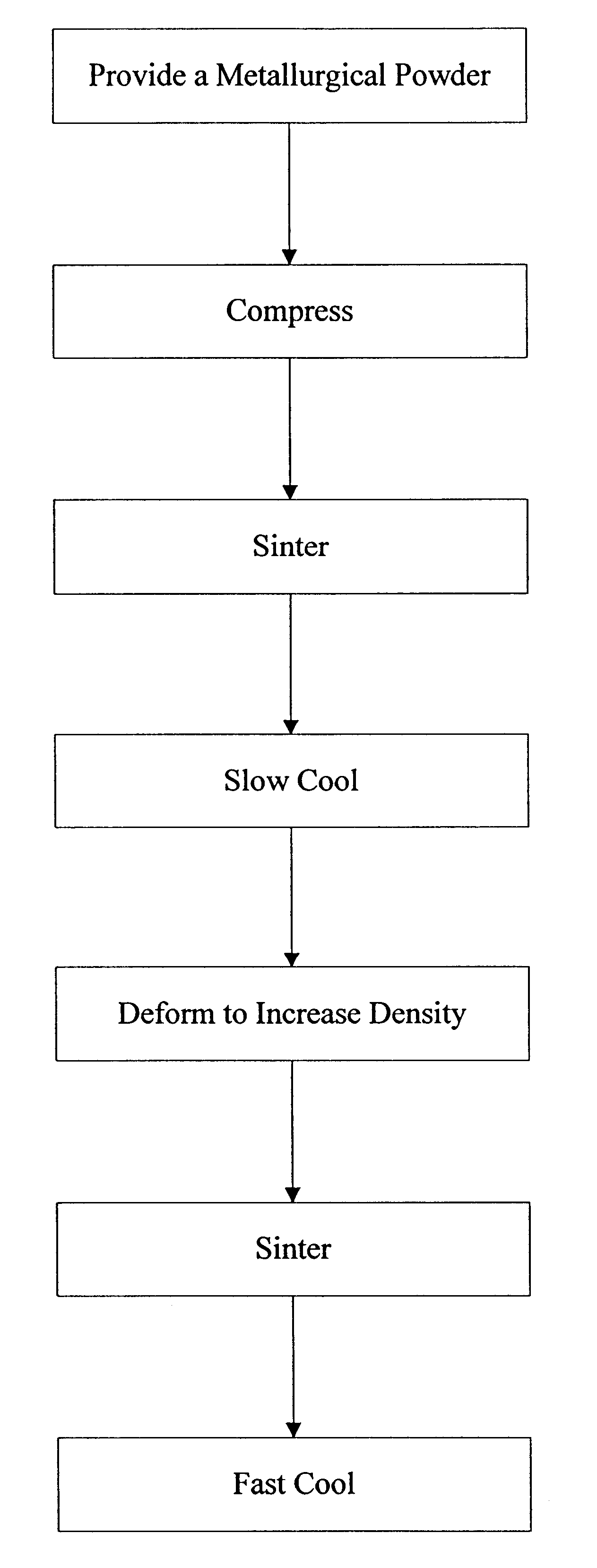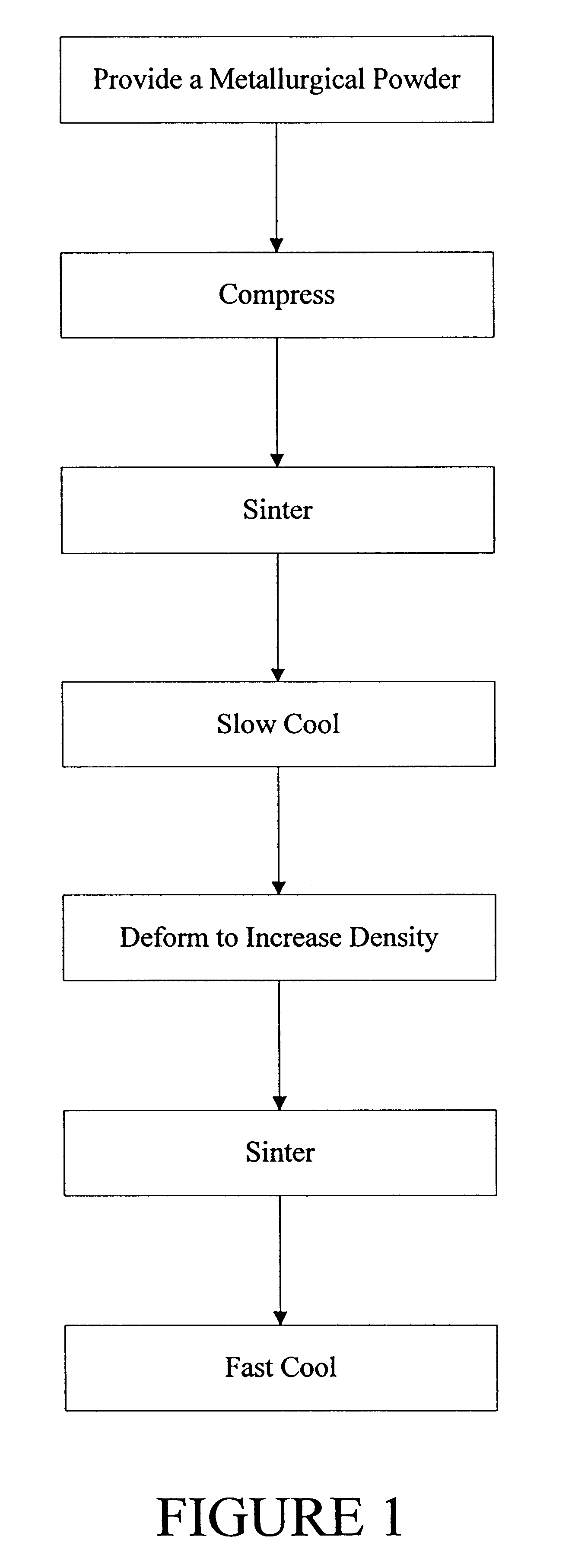Method for producing powder metal materials
a metal material and powder technology, applied in the direction of coatings, etc., can solve the problems of increasing endurance limits, high endurance limits, and high endurance limits of dense materials, and achieve high torque and/or tensile strength, high surface hardness, and high endurance limits
- Summary
- Abstract
- Description
- Claims
- Application Information
AI Technical Summary
Benefits of technology
Problems solved by technology
Method used
Image
Examples
example 1
A modified AISI type 4600 steel powder including 3.0 weight percent copper and 0.6 weight percent carbon was prepared by blending 97 parts (by weight) Kobelco 46F4 pre-alloyed steel powder (0.5Ni-1.0Mo-0.2Mn-0.1Cr--bal Fe, all in weight percentages), 3 parts Pyron 26006 copper powder, 0.6 parts Southwest Graphite 1652 powdered graphite (96 weight percent carbon, balance ash), and 0.65 parts Lonza Atomized Acrawax lubricant. A green compact was formed by molding a portion of the powder at 50 tsi. The density of the green compact was about 7.1 g / cc. The green compact was sintered at 2050.degree. F. in a 95% N.sub.2 -5% H.sub.2 (by volume) atmosphere and held at temperature for about 25 minutes. The heated compact was then cooled to room temperature within the sintering furnace at a cooling rate of about 40.degree. F. / min. The hardness of the cooled sintered compact was about RB 95. The cooled sintered compact was surface densified by roller burnishing using about 10,000 lb / inch of lin...
example 2
Hot formed races were produced by the method of the invention as follows. A metallurgical powder blend (designated Mix 19139) was provided by blending 97.5 parts (by weight) Hoeganaes 0.85Mo--balance Fe steel powder, 2.5 parts Pyron 26006 copper powder, 0.68 parts Southwest Graphite 1652 graphite powder, and 0.75 parts Lonza Atomized Acrawax. The nominal sintered chemical composition of Mix 19139 was 0.85Mo-2.5Cu-0.6C--bal Fe. Parts formed from Mix 19139 by a method according to the present invention were compared with parts formed from a conventional powder mix (Mix FL4606) used to make races. Mix FL4606 was formed by blending 100 parts Hoeganaes 4600V steel powder, 0.6 parts Southwest Graphite 1652 graphite powder, and 0.75 parts Lonza Atomized Acrawax. The nominal sintered chemical composition of Mix FL4606 was 1.8Ni-0.55Mo-0.6C--bal Fe. Races were formed of the two mixes by placing a portion of each powder blend in a race die and compacting at 40 tsi to provide a compact having ...
example 3
Parts produced by the method of the invention utilizing a hot forming step to enhance strength, elongation, and impact resistance were evaluated. A typical application for such high strength hot formed parts is as cam lobes for use in assembled cam shafts. Material for use in such applications conventionally has been produced by hot forming a compact of a 4600 steel and then tempering the material. Tensile strength specimen bars were made by conventional hot forming techniques from a powder mix having the following composition:
Mix FL4608--100 parts Hoeganaes 4600V steel powder, 0.85 parts Southwestern Graphite 1652 graphite powder, and 0.75 parts Lonza Atomized Acrawax.
The tensile bars were evaluated for mechanical properties and compared with material made by a method according to the present invention from the Mix 19139 powder described in Example 2 as follows. Compacts of all mixes were molded, sintered, cooled, hot formed, and grit cleaned as described in Example 2 above. Hot fo...
PUM
| Property | Measurement | Unit |
|---|---|---|
| temperature | aaaaa | aaaaa |
| density | aaaaa | aaaaa |
| temperature | aaaaa | aaaaa |
Abstract
Description
Claims
Application Information
 Login to View More
Login to View More - R&D
- Intellectual Property
- Life Sciences
- Materials
- Tech Scout
- Unparalleled Data Quality
- Higher Quality Content
- 60% Fewer Hallucinations
Browse by: Latest US Patents, China's latest patents, Technical Efficacy Thesaurus, Application Domain, Technology Topic, Popular Technical Reports.
© 2025 PatSnap. All rights reserved.Legal|Privacy policy|Modern Slavery Act Transparency Statement|Sitemap|About US| Contact US: help@patsnap.com


